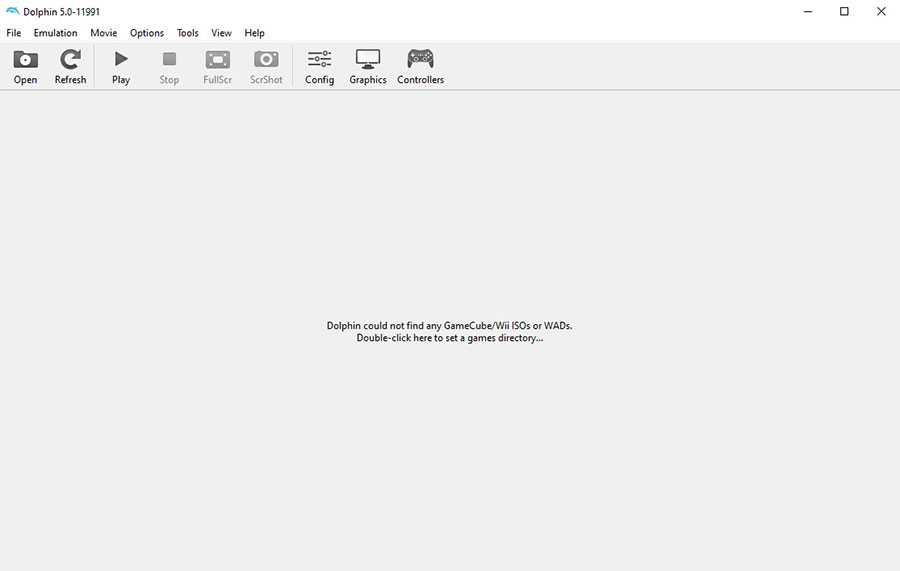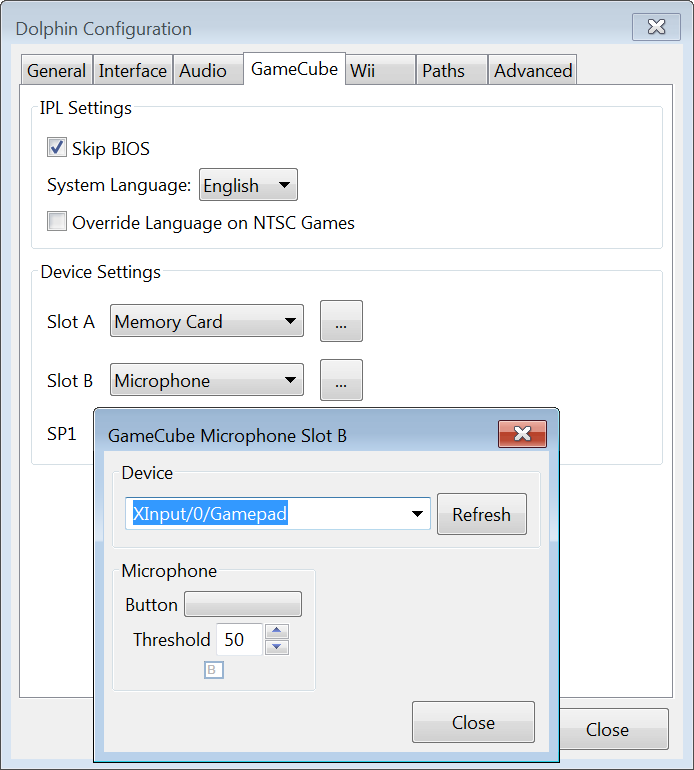
- #Dolphin emulator gamecube memory card full
- #Dolphin emulator gamecube memory card software
- #Dolphin emulator gamecube memory card code
Several games originally scheduled to launch with the console were delayed.
#Dolphin emulator gamecube memory card software
Nintendo unveiled its software lineup for the sixth-generation console at E3 2001, focusing on fifteen launch games, including Luigi's Mansion and Star Wars Rogue Squadron II: Rogue Leader. The console was announced as the GameCube at a press conference in Japan on August 25, 2000, abbreviated as "NGC" in Japan and "GCN" in North America. The Dolphin platform is reputed to be king of the hill in terms of graphics and video performance with 128-bit architecture." Of ATI's acquisition of ArtX, an ATI spokesperson said, "ATI now becomes a major supplier to the game console market via Nintendo. In total, ArtX team cofounder Greg Buchner recalled that their portion of the console's hardware design timeline had arced from inception in 1998 to completion in 2000. ĪrtX was acquired by ATI in April 2000, whereupon the Flipper graphics processor design had already been mostly completed by ArtX and was not overtly influenced by ATI. Nintendo also formed a strategic partnership with IBM, who created the Dolphin's CPU, named "Gekko". Subsequently, Nintendo began providing development kits to game developers such as Rare and Retro Studios. At Nintendo's press conference in May 1999, the console was first publicly announced as "Project Dolphin", the successor to the Nintendo 64. The console project had a succession of codenames: N2000, Star Cube, and Nintendo Advance. Partnering with Nintendo in 1998, ArtX began the complete design of the system logic and of the graphics processor ( codenamed " Flipper") of Nintendo's sixth-generation video game console. Wei Yen, who had been SGI's head of Nintendo Operations, the department responsible for the Nintendo 64's fundamental architectural design. In 1997, a graphics hardware design company called ArtX was launched, staffed by twenty engineers who had previously worked at SGI on the design of the Nintendo 64's graphics hardware.
#Dolphin emulator gamecube memory card full
Its successor, the Wii, launched in November 2006 and features full backward compatibility with GameCube games, storage, and controllers. Nintendo sold 21.74 million GameCube units worldwide, much less than anticipated, and discontinued it in 2007. It was praised for its controller, extensive software library, and high-quality games, but was criticized for its exterior design and lack of multimedia features. The Game Boy Player add-on runs Game Boy, Game Boy Color, and Game Boy Advance cartridge games. Saved game data can be stored exclusively on memory cards due to the read-only optical disc format. The GameCube supports e-Reader cards for unlocking special features in a few games. The console supports limited online gaming for a small number of games via a GameCube broadband or modem adapter and can connect to a Game Boy Advance with a link cable, which allows players to access exclusive in-game features using the handheld as a second screen and controller. Unlike its competitors, the system is solely focused on gaming and does not support DVD, CDs, or other optical media. Upon its release in 2001, the GameCube became Nintendo's first console to use optical discs, specifically a miniDVD- based format, as its primary storage medium instead of ROM cartridges.

#Dolphin emulator gamecube memory card code
Nintendo publicly announced the console under the code name "Project Dolphin" in a May 1999 press conference.

Its earliest development began with the 1997 formation of ArtX, a computer graphics company later acquired by ATI, which would go on to produce the console's GPUs. As Nintendo's entry in the sixth generation of video game consoles, the GameCube competed with Sony's PlayStation 2 and Microsoft's original Xbox. It is the successor to the Nintendo 64, which released in 1996, and predecessor of the Wii, which released in 2006. The Nintendo GameCube is a home video game console developed and released by Nintendo in Japan on September 14, 2001, in North America on November 18, 2001, and in PAL territories in 2002. Select Game Boy, Game Boy Color, and Game Boy Advance games via Game Boy Player


 0 kommentar(er)
0 kommentar(er)
